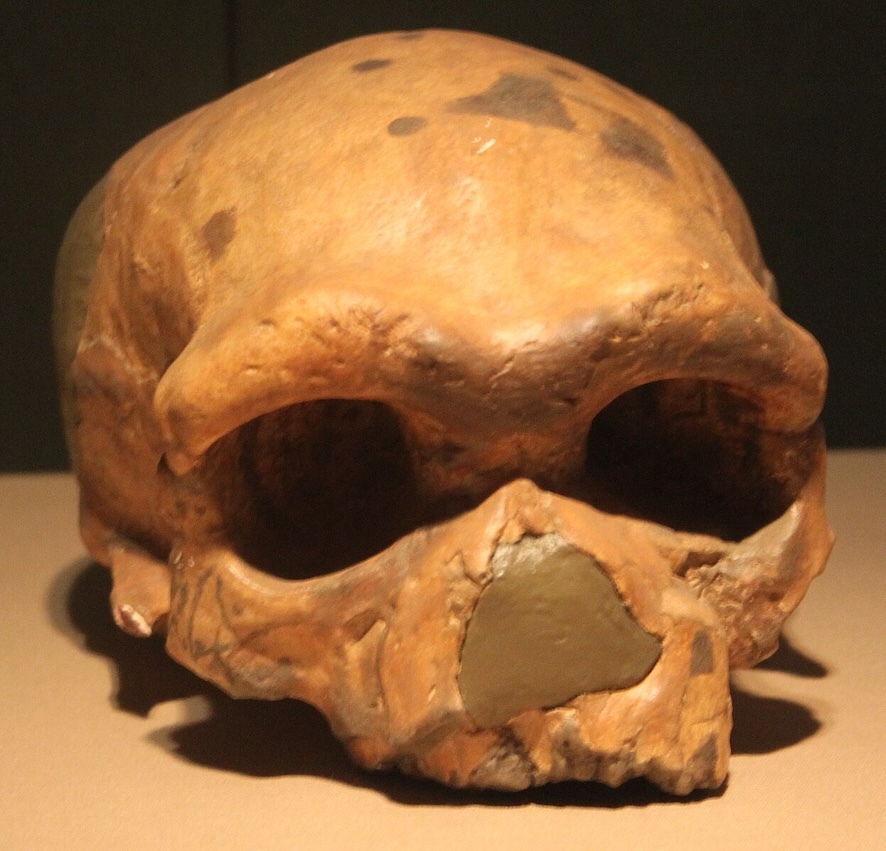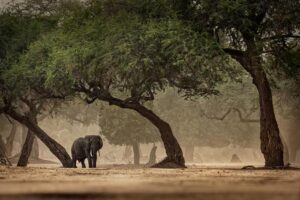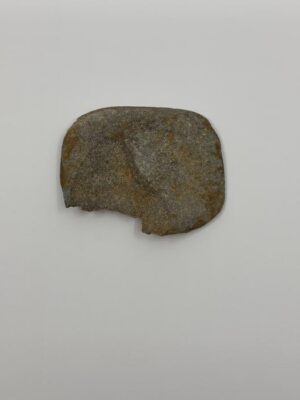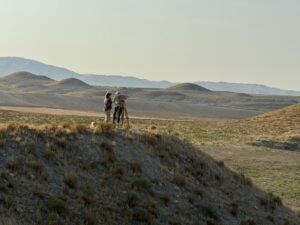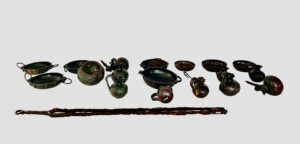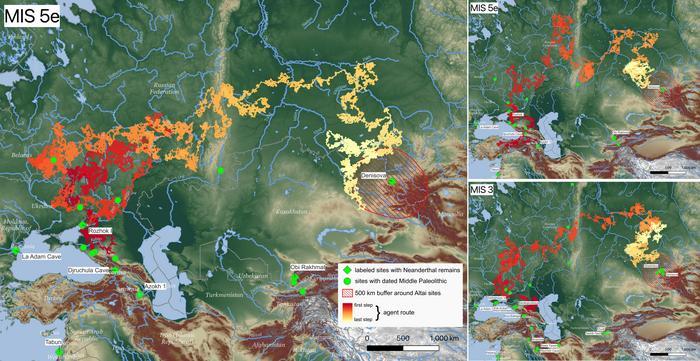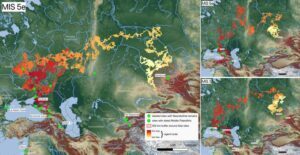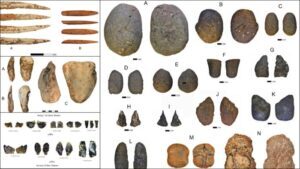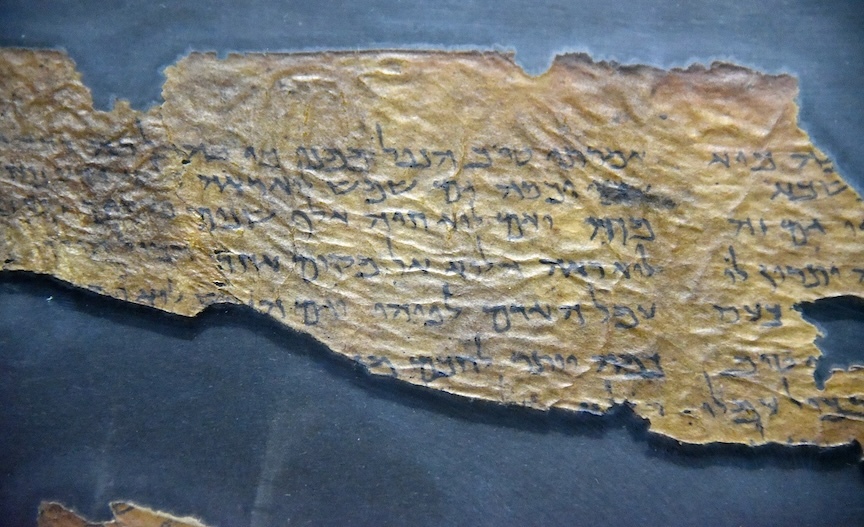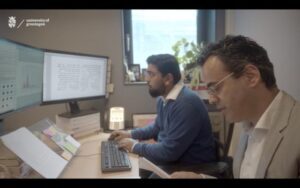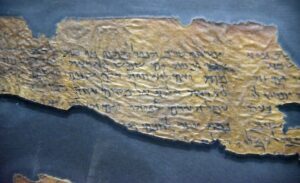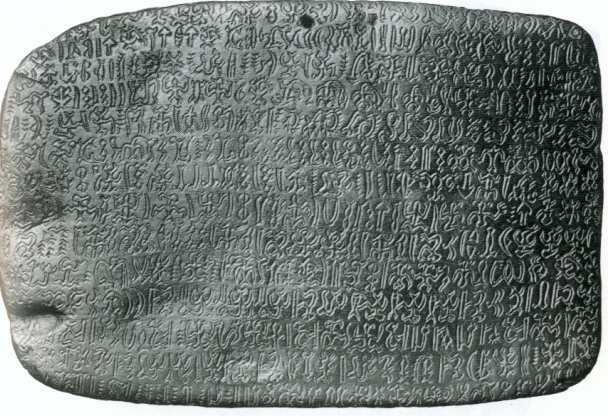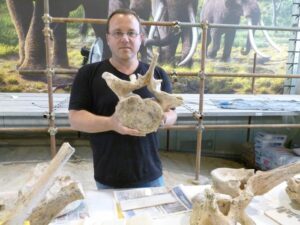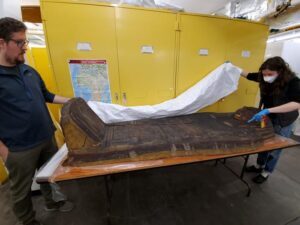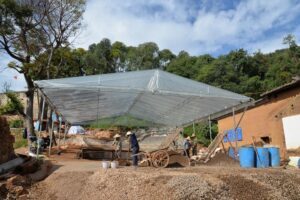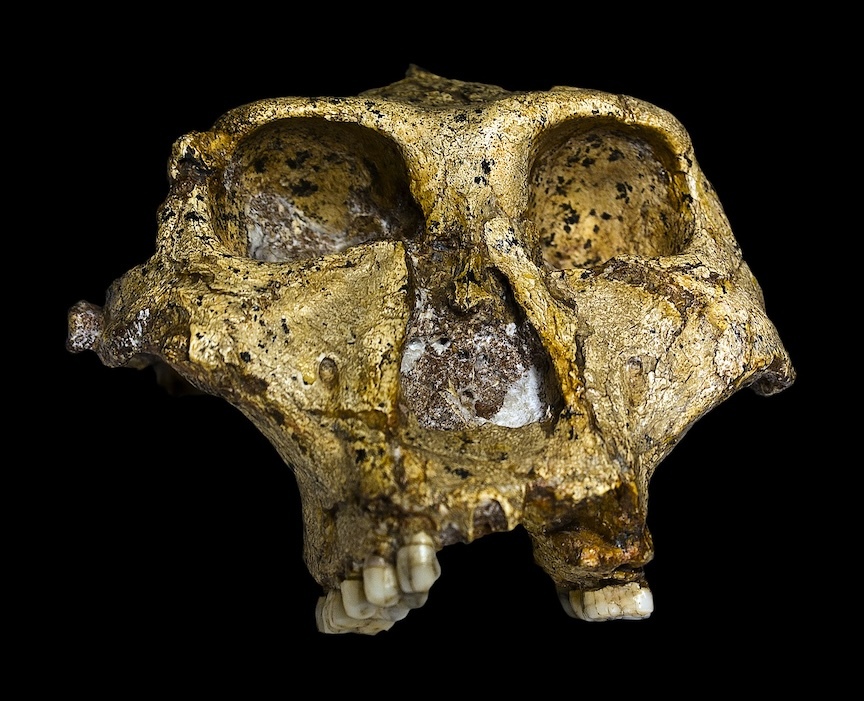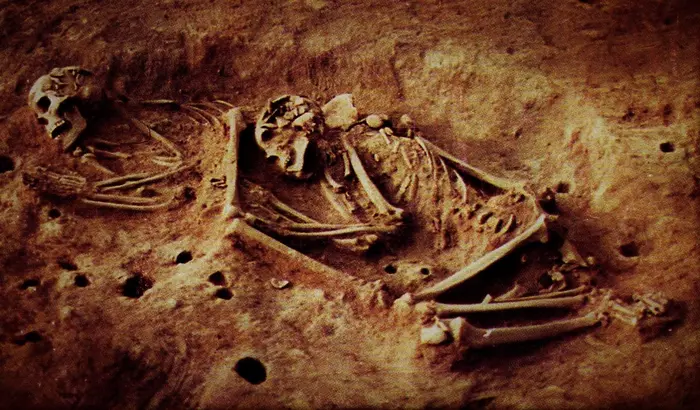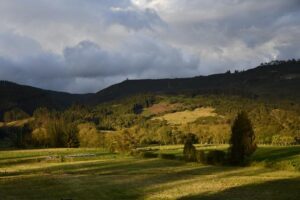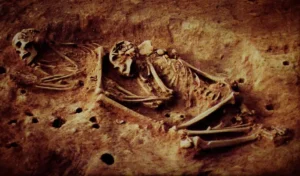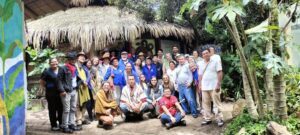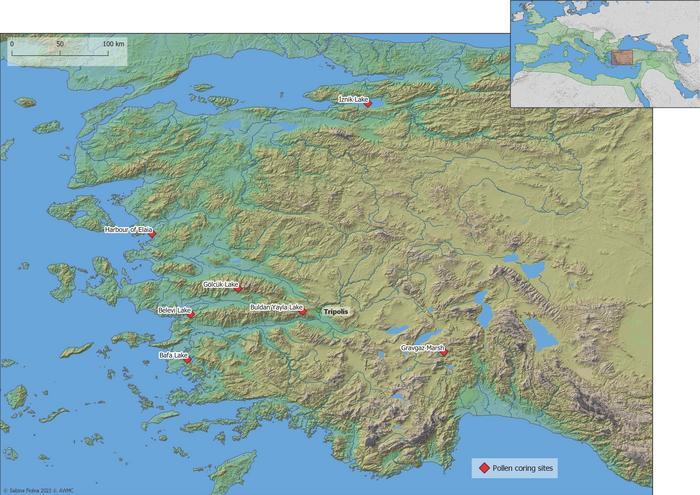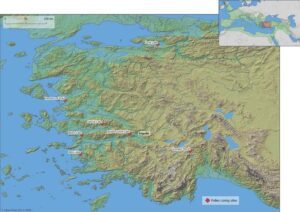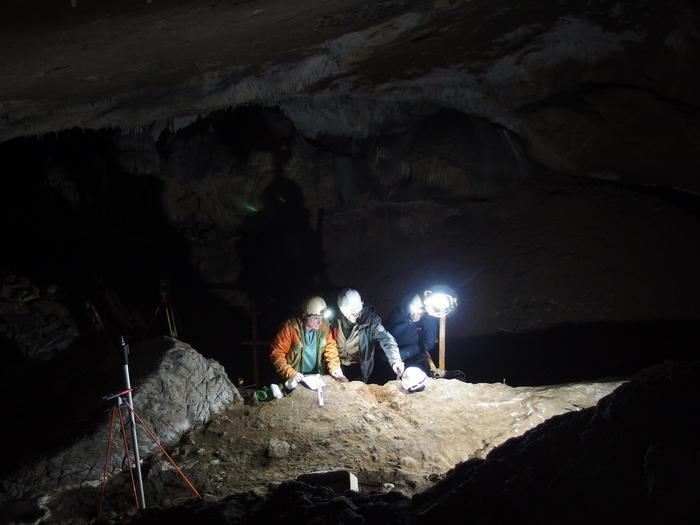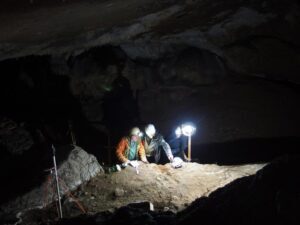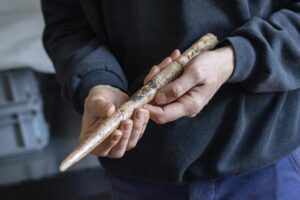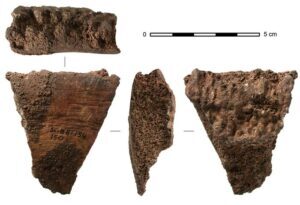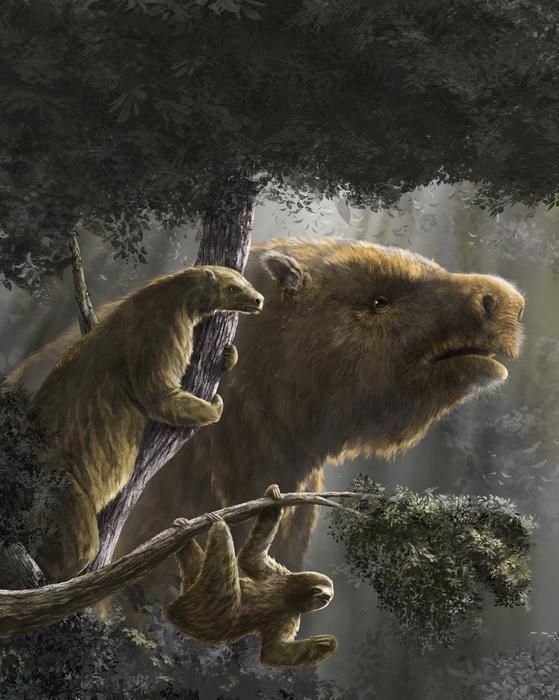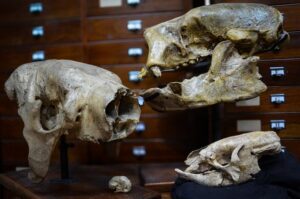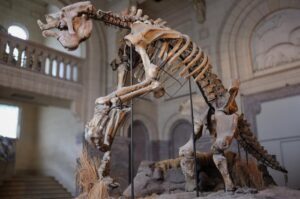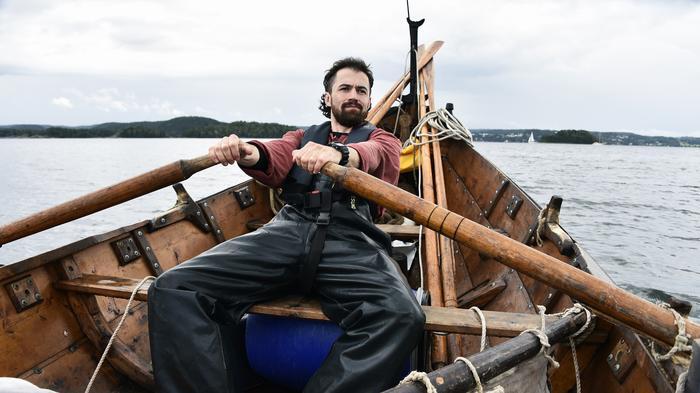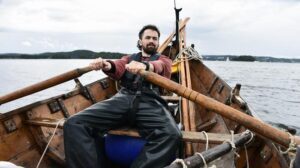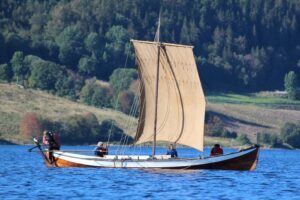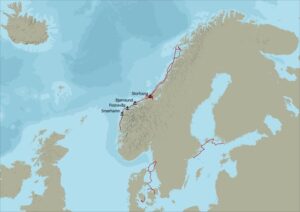
How humans moved large rocks to construct monuments has fueled many theories, even though it is a matter of physics and coordinated efforts by a large workforce. A more interesting concept to explore for prehistoric cultures is what made people care so much about certain rocks, or more specifically, what made them move these rocks for miles.
Stone artifacts are valued to this day. In 2023, a 335-pound rock (152 kg) called the Stone of Scone was brought to Westminster Abbey for the coronation of King Charles III. Legends suggest it has a biblical origin, being used as Jacob’s pillow in Palestine, but archaeologists and historians postulate that it originally came from Scotland because it is made out of sandstone, as opposed to the limestone bedrock of the Holy Land. This notable stone was part of Scotland’s history until England “stole” it in 1296. It was finally returned to Scotland in 1996, and now only makes brief trips to England.
Seizing the Stone of Scone represented an assertion of power, and this reasoning for transporting artifacts is common throughout history. In the 19th century, the Luxor Obelisk was taken from the banks of the Nile and now stands in central Paris. Claiming an artifact, however, is different from quarrying stones and moving them long distances to erect menhirs and dolmens in a seemingly nondescript location.
People were moving larger stones with minimal use of technology during prehistory. Megaliths are monuments comprising large stones, as opposed to a monumental feat of architecture made by carving blocks. One of the biggest questions about these mysterious sites is where the raw material was dug out of the earth. Excavations at quarrying sites for the most famous megaliths have led to surprising discoveries in the past 10 to 20 years.
Stonehenge comprises two types of rock, the more iconic and larger sarsen stones having only traveled approximately 20 miles to Salisbury Plain. The smaller menhirs in the circle, called bluestones, traveled more than 200 miles from southwest Wales, which makes “the distance from quarry to eventual destination… the maximum known for megalithic monuments anywhere in the world,” according to a 2022 study published in the Journal of Archaeological Science.
According to a recent theory, the stones weren’t quarried specifically for Stonehenge. In 2010, a smaller stone circle named Waun Mawn was discovered adjacent to the bluestone quarry in Wales. Excavations at this site dated it to be older than Stonehenge by a few centuries, and holes where missing bluestones once stood led to early theories that they were taken to build Stonehenge.
Further research has yet to prove this, and more studies are still emerging, some debunking that theory. “There is nothing at Waun Mawn to link this site in any way to Stonehenge… It is concluded that at Waun Mawn and elsewhere in West Wales there has been substantial ‘interpretative inflation’ driven by the desire to demonstrate a Stonehenge connection,” stated a 2024 study published in the Holocene.
Meanwhile, if a 900-year-old legend is to be believed, Stonehenge was “moved” from Ireland to its current location by giants under the orders of the wizard Merlin. These findings only raise more questions about the dynamics behind such an impressive mobilization of resources.
The construction of megaliths, in some instances, likely involved materials traveling long distances, resulting from resource necessity and ceremonial importance. The monuments made of rocks lasted longer than others over the centuries and have been intentionally placed in areas where they were visible in the landscape. Visibility, placement, and arrangement are important aspects of how experts theorize prehistoric symbolism. Prestige and sacred importance are assumed to directly influence the effort undertaken during a prehistoric project, and this applies to the motivation people felt while erecting megaliths.
The Korean Peninsula has the largest concentration of megaliths in the world, and has 40 percent of the world’s dolmens, according to the Asia Society..
The Korean dolmen tombs typically contain the remains of one individual and are associated with the Bronze Age due to the types of artifacts in the burials. One conundrum for archaeologists is that fewer valuable grave goods were found in the more complex dolmens, which is counterintuitive to perceptions of what denotes prestige in archaeological theory. Europe, meanwhile, is home to 35,000 distinct stone orientations. Most of these megaliths date from 4,500 to 2,500 BC, according to an article in Discover magazine.
Most of them are rings of menhirs like the Ring of Brodgar in Orkney, Scotland, or are dolmen grave markers like the Dolmen de Sa Coveccada on the coast of northeast Sardinia. A majority of dolmen grave markers and the rings of menhirs usually face the rising sun or have some sort of astronomical alignment, and are found in coastal parts of Europe. This is linked to a theory from 2019 that the practice of erecting such monuments originated in northwest France before spreading to other parts of Europe in waves, according to a study published in the Proceedings of the National Academy of Sciences of the United States of America. This theory was developed as more research and comprehensive radiocarbon dates consistently indicated that megalith sites in northwestern France, like the Carnac stones, were among the oldest at approximately 6,000 years old.
A notable exception to this trend is the tallest single upright stone on the Iberian Peninsula, the Menir da Meada in Portugal, estimated to be 6,000 to 7,000 years old based on carbon-dated charcoal from the base of the stone. While the culture of certain megalith phenotypes may have spread through travel and exchange, it is also a mix of divergent and convergent development.
Most of these European megaliths used raw materials from sources located between 10 and 20 miles from the site, and some were erected just adjacent to where they were quarried. In the case of these sites, compared to Stonehenge, resource availability seems to have played a larger role in placement than specific symbolism. This is difficult to discern since a short journey also involves a serious undertaking, but the coastal placement of many dolmens and menhirs likely has more clues to the underlying symbolism in construction.
Sacred importance is generally the key to understanding megaliths in any cultural context, because they were used for cultic or ceremonial practices. One of the most significant megaliths for understanding ancient cultic practices is the Göbekli-Tepe complex in Turkey. It has T-shaped stone pillars erected and carved with animal motifs surrounding a central altar. It is more than 11,000 years old and only just predates agricultural developments for Upper Mesopotamia. The site is the only ceremonial center of such a high caliber for a prehistoric hunter-gatherer population. Possibly the oldest temple in the world, excavation work has continued to yield discoveries as of 2025 since it was first surveyed in 1963.
Despite being so important for ceremony and belief traditions, the limestone slabs at Göbekli-Tepe were quarried just at the bottom of the hill from where the shrine was erected. The hunter-gatherers at the time were using stone flints to carve out the blocks 6,000 years before Stonehenge was built, and the process would have required a lot of effort, even though the blocks didn’t need to be transported for long distances.
There are multiple categories for megaliths. Stonehenge is a combination of menhirs, which are erected stones, and dolmens, which have one stone flat like a tabletop on two other stones. The well-known carved heads on Easter Island, Chile, are worked menhirs, along with the intricately-etched deer stones dotting the central Mongolian steppe, dated to the Bronze Age.
Other types of megaliths are cairns, which are massive piles of rocks and boulders of varying sizes but are typically much smaller than any component of Stonehenge. These are usually associated with burials, like the phenotype linked to Mongolia’s deer stones—Khirigsuurs. These massive stone mound burials indicate how many people gathered for and built a burial. The largest is more than a square kilometer. Many of these burial mounds also have rings or fences of smaller stone mounds containing horse remains.
There are different subdivisions of cairns depending on styles and other architectural elements—similar to the ones in Mongolia—usually containing a burial chamber. This subgroup of megaliths is frequently linked with prestige since they are associated with burials.
Cists usually have cairn traits with a more systematic structure, but specifically refer to the square stone structure in the middle of the monument. These are usually thought to be used for mortuary purposes, but some notable examples have no signs of human remains. Like Stonehenge, most megaliths have a combination of these features.
Rujm el-Hiri, or “Israel’s Stonehenge,” has a central cist but is surrounded by expanding rings of concentric circles. There are lines of rocks connecting the outer rings in some sections that look like spokes, partly inspiring its Hebrew name, which translates to “Wheel of Ghosts.” Even though artifacts, including gold jewelry were found here, the lack of human remains is part of the reason experts have made several speculations about its intended use, including a platform for sky burials, a sacrificial altar, and an astronomical observatory.
The observatory theory was countered by an article published in November 2024 by Remote Sensing, arguing that due to tectonic activity and the movement of celestial bodies, the sides and spokes of Rujm el-Hiri would not be aligned like they are now when the megalith was constructed approximately 6,000 years ago.
The question surrounding how megaliths were constructed has resulted in various theories despite a wide range of feasible and plausible solutions. Log rollers helped transport large stones well before a wheel or cart was devised. Using simple physics, it is theorized that holes were dug and then an A-frame of two timbers called a shearleg was set up to place a high fulcrum so people could pull ropes attached to the stone slab, erecting it into an upright position.
Another take has been ethnographically documented on Easter Island. The people of Rapa-Nui lifted fallen carved heads using levers. They lifted the head slightly with log levers and propped it at that position with wedges or ropes, and repeated this until it was vertical. Excavations from the bluestone quarry in Wales found that stone wedges were used to extract the stones for the construction of Stonehenge.
Even though cists, cairns, and other monuments were made from a collection of boulders and smaller rocks, that doesn’t mean they didn’t require extensive manpower. These archaeological structures usually provide extensive data on prehistoric cultures, especially if associated with grave goods and symbolism. They show how important a deceased individual was, and hint at the sort of collective event a burial and cairn construction may have entailed at the time.
Many different cultures around the globe worked and carved artifacts out of rock, producing isolated or unique megaliths not too different from the iconic faces at Easter Island. Bada Valley on the Indonesian island of Sulawesi is home to more than 400 megalithic sculptures fashioned with humanoid, animalistic, or geometric features. A few of the humanoid menhirs even have names and stories in contemporary and local pantheons. In Mexico during the Bronze Age, the Olmec culture is credited with carving massive heads, the largest of which weighs up to approximately 50 tons. It’s speculated they were made in the likeness of Olmec rulers.
Similar to the pyramids and other monuments, megaliths required organized coordination among a large number of people. Despite this, early and flawed archaeological theories on linear development have postulated that monuments are a hallmark of civilizations, while megaliths are mysteries and archaic in nature.
In Latin America, architectural practices followed by the Aztecs, Mayans, and Incas utilized stone blocks that seamlessly fit together (although regularly nonuniform) to build walls, temples, pyramids, and fortresses. A notable example of megalithic construction is Tiwanaku, located almost 4,000 meters above sea level in Bolivia. The temple complex has impressive artefacts, including the monolithic Gate of the Sun.
It is established that Egyptians and people in Micronesia were transporting megaliths and building materials by boat. The technology and proof of it are there, but now many researchers are using new technologies and novel approaches to better understand what exactly prompted people to move boulders and mountains in the first place.
____________________________
This article was produced by Human Bridges.
Cover Image, Top Left: Stonehenge. DigitalArtist, Pixabay
